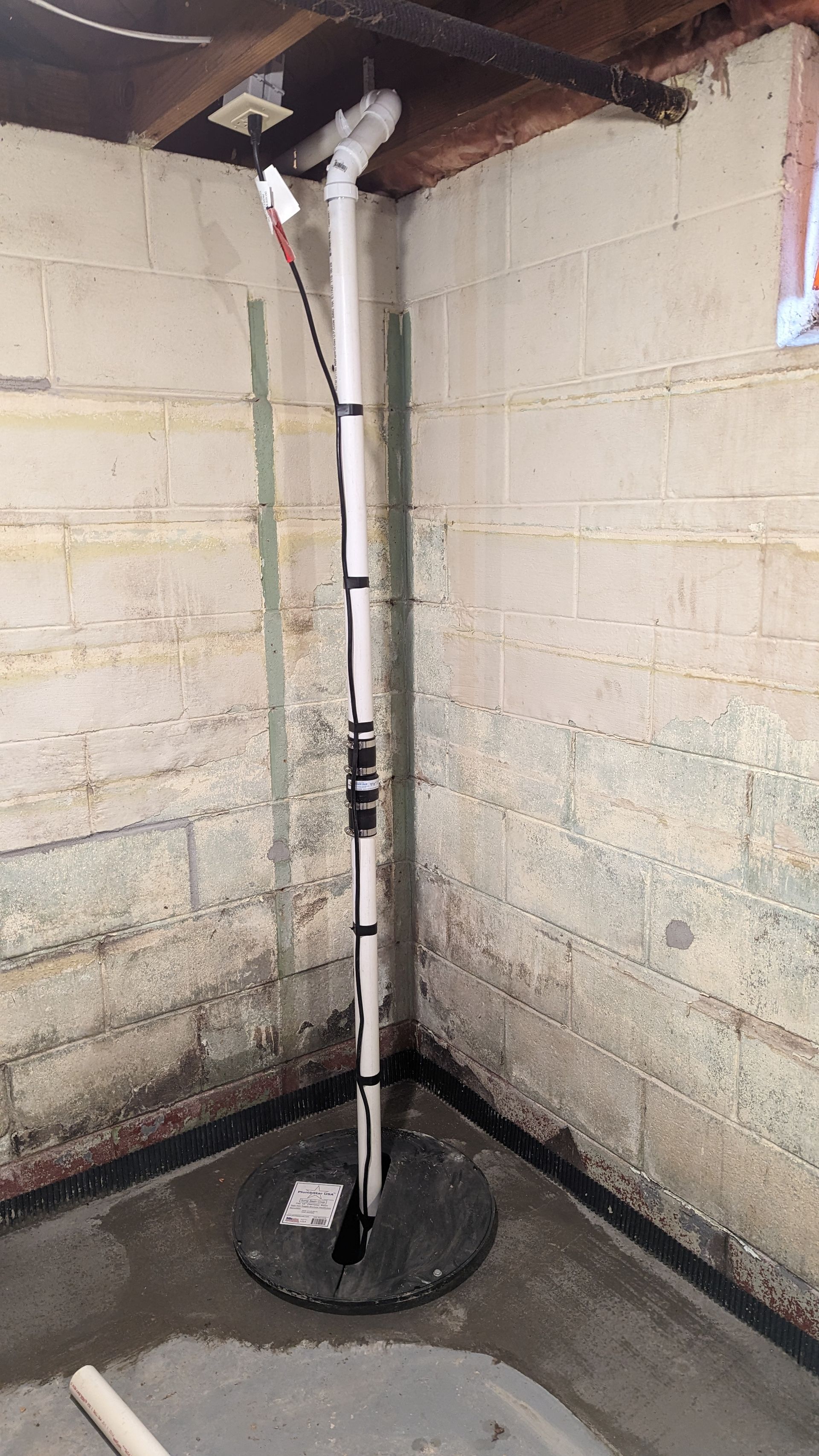Basement Waterproofing Basics
What are the basic components of a basement waterproofing system?
In this article I am going to highlight the parts of a typical Wisconsin basement and explain how the components of a basement work together to keep a basement dry. First, it is important to understand some of the basic parts of a typical foundation.
Footing or Footer:
This is a concrete slab that is usually about 8” thick and 18” wide. The size of footings can vary based on soil load bearing capacity and other variables. Older homes may have footings made of other materials such as Lannon stones. The footing supports the foundation walls which support the weight of the home and keep it from settling.
Cross Bleeders:
The cross bleeders are pipes or connections through the footing that are used to connect the interior and exterior drain tile systems.
These help to equalize water pressure and ensure that water is efficiently directed to the sump pit, regardless of whether it's coming from the inside or outside.
Interior Drain Tiles:
These are concrete pipes laid end to end or a perforated ABS pipe installed along the interior perimeter of the basement footing.
They collect and channel water that seeps into the basement through holes in the footing called cross-bleeders. The collected water is conducted through the drain tiles to the sump pit.
Exterior Drain Tiles:
These are similar to interior drain tiles, but they are installed along the exterior perimeter of the foundation's footing, outside the basement walls. They help to collect water before it can penetrate the foundation and make its way into the basement. Exterior drain tiles are usually installed above or alongside the foundation's footing.
Sump Pit or Basin:
The sump basin is a hole dug at the lowest point of the basement where water naturally collects. If the basement floor is flat, this basin can be installed almost anywhere along the inside perimeter of the footing. The interior drain tiles terminate in this basin in order to channel basement water into the basin so the pump can eject the water that collects inside the pit.
Sump Pump:
A basement sump pump is a critical component of a waterproofing system designed to prevent water accumulation in basements or crawlspaces. Its main purpose is to remove accumulated water that collects in a sump pit, which is a hole dug in the lowest part of the basement or crawlspace. The sump pump helps to keep the area dry and prevents flooding, which can cause structural damage, mold growth, and other issues. The sump pump is installed in the sump basin. When the water level in the sump pit reaches a certain point (triggered by a float switch or pressure sensor), the sump pump activates. The pump then removes the water from the pit and discharges it away from the foundation, typically through a pipe leading to the outside or into the storm drain. The combination of interior and exterior drain tiles, along with a sump pump and cross bleeders, creates a comprehensive waterproofing system. This system helps manage and redirect groundwater, preventing it from entering the basement and causing damage. Regular maintenance of the sump pump and ensuring proper drainage are essential to the effectiveness of the system.
Sump Pump Types
Submersible:
A submersible pump is placed directly inside the sump pit. It is designed to be submerged in water during operation. This style of pump has the added benefit of being cooled by water that accumulates in the basin. Submersible pumps are often quieter and more discreet, suitable for finished basements.
Pedestal:
In a pedestal pump, the motor is mounted above the sump pit, and only the impeller is submerged. The float switch is mounted on a rod above the pump. Pedestal pumps are easier to access for maintenance but may be louder compared to submersible pumps. Pedestal style pumps have become less popular with the rise in popularity of submersible style pumps.
Battery Backup:
A battery backup sump pump is designed to work in case of a power outage. It often accompanies a primary sump pump and is triggered when the primary pump fails or when power is lost. This type ensures continuous pumping during emergencies as long as the battery is charged.
Combination:
This system combines a primary pump with a backup pump, offering redundancy.
The primary pump handles regular water influx, while the backup pump activates during power outages or primary pump failure.
When selecting a pump, it's essential to consider factors such as the size of the sump pit, power requirements, backup options, and the specific needs of your basement or crawlspace. Always follow the manufacturer's recommendations and guidelines for installation and maintenance. One of the most important components of a sump pump is the float switch. There are many different styles of float switches, but the most common types are tethered and vertical float switches. Tethered float switches can get stuck on the side of the sump basin as the water level inside the sump basin rises, but vertical float switches usually don't have that issue. For this reason, the vertical float switch is usually preferred for most residential applications
Float switches are crucial components in sump pumps, as they trigger the pump to turn on or off based on the water level in the sump pit. There are several types of float switches commonly used in sump pump systems. Here are some of them:
Tethered:
This type of float switch uses a buoyant float attached to the pump by a tether or rod.
As the water level in the sump pit rises, the float also rises, lifting the tether.
When the float reaches a certain height, it triggers the switch, turning on the sump pump.
Tethered float switches are suitable for larger sump pits. This style of switch can become stuck on the side of the basin which can prevent operation. For that reason we prefer not to use this style of switch.
Vertical:
Also known as a vertical action switch.
It moves up and down vertically along the pump shaft.
As the water level increases, the float rises, activating the switch and starting the pump.
Vertical float switches are commonly found in both submersible and pedestal sump pumps. The downside of this style is that they are usually not adjustable, so they may only turn on and off at one specific height. This lack of adjustment can make the pump cycle more often.
Electronic or Solid-State Switch:
Instead of a physical float, this type uses sensors or probes to detect water levels.
The switch is activated electronically when water contacts the sensors.
Electronic float switches are often more reliable and durable, with no moving parts that can get stuck or wear out, but they are also less common due to higher cost.
Diaphragm or Pressure Switch:
This type of switch doesn't use a float but relies on changes in water pressure.
As water enters the sump pit, it changes the air pressure in the switch.
The change in pressure triggers the switch, activating the pump.
Diaphragm switches are commonly used in some submersible sump pumps.
Inverted Bucket Float Switch:
This float switch features an inverted bucket design.
As water level rises, the bucket flips, activating the switch and turning on the pump.
Inverted bucket float switches are known for their reliability and durability.
The choice of float switch depends on multiple factors such as the size of the sump pit, the type of sump pump, and personal preferences. Each type has its advantages and considerations. For example, tethered floats may require more space but are suitable for larger pits, while vertical floats are more compact. Electronic switches offer reliability without moving parts but may be more expensive. When installing or replacing a float switch, it's essential to follow the manufacturer's guidelines and ensure proper positioning for effective operation.

